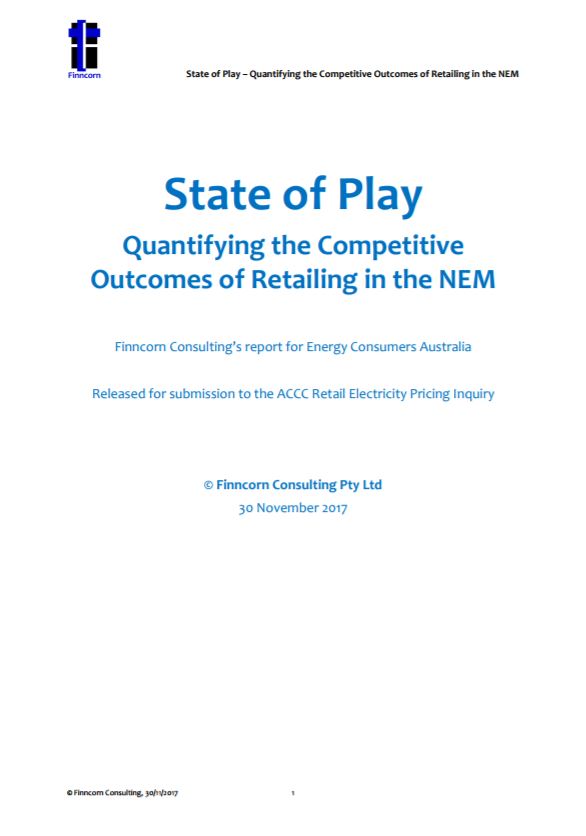Energy Consumers Australia commissioned Finncorn Consulting to undertake research over the last twelve months to understand the drivers of retailer business models, and the implications for the competitive outcomes in electricity and gas markets.
This report presents long-term trends in publicly disclosed information from a number of listed and unlisted retailers. Finncorn’s analysis in this report is unique because it differentiates between the costs and performance of Tier 1 retailers (AGL, Origin and Energy Australia), mid-size Tier 2 retailers such as Red Energy and Lumo Energy and small Tier 3 retailers.
Using the information available, Finncorn has highlighted important aspects of the competitive market structure and performance that are relevant for the Australian Competition and Consumer Commission’s (ACCC) Electricity Supply and Pricing Inquiry. The current state of play suggests that the new costs introduced by competition (and price deregulation) to acquire and retain customers have not been offset by greater operating cost efficiencies by retailer businesses. Further, the profitability of the larger retailers has been underpinned by the overall price levels being set in the market by their smaller, higher cost competitors.
This report, and its findings, reinforce the importance of the Inquiry, and the need for better regular information disclosure by all retailer businesses, towards the standards set by AGL and Origin. Given that each jurisdiction is at a different stage of evolution in competition in retail markets, it would also be useful if retailers were to provide more granular information to the Inquiry on which to assess outcomes. Only then will it be possible to reach firm conclusions about the competitive outcomes in retail electricity (and gas markets), on which to base potential policy recommendations.
The full report can be read here.

